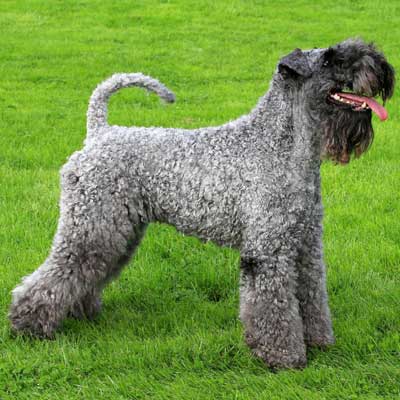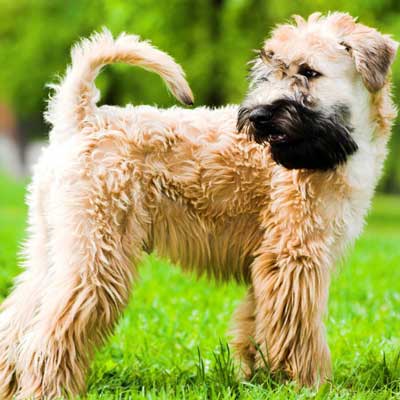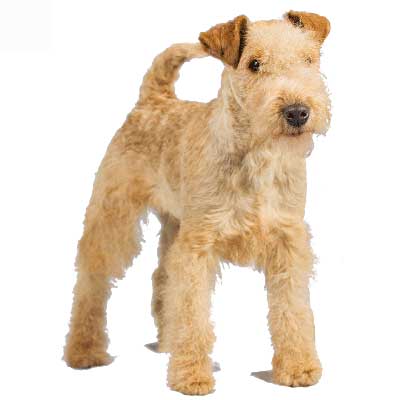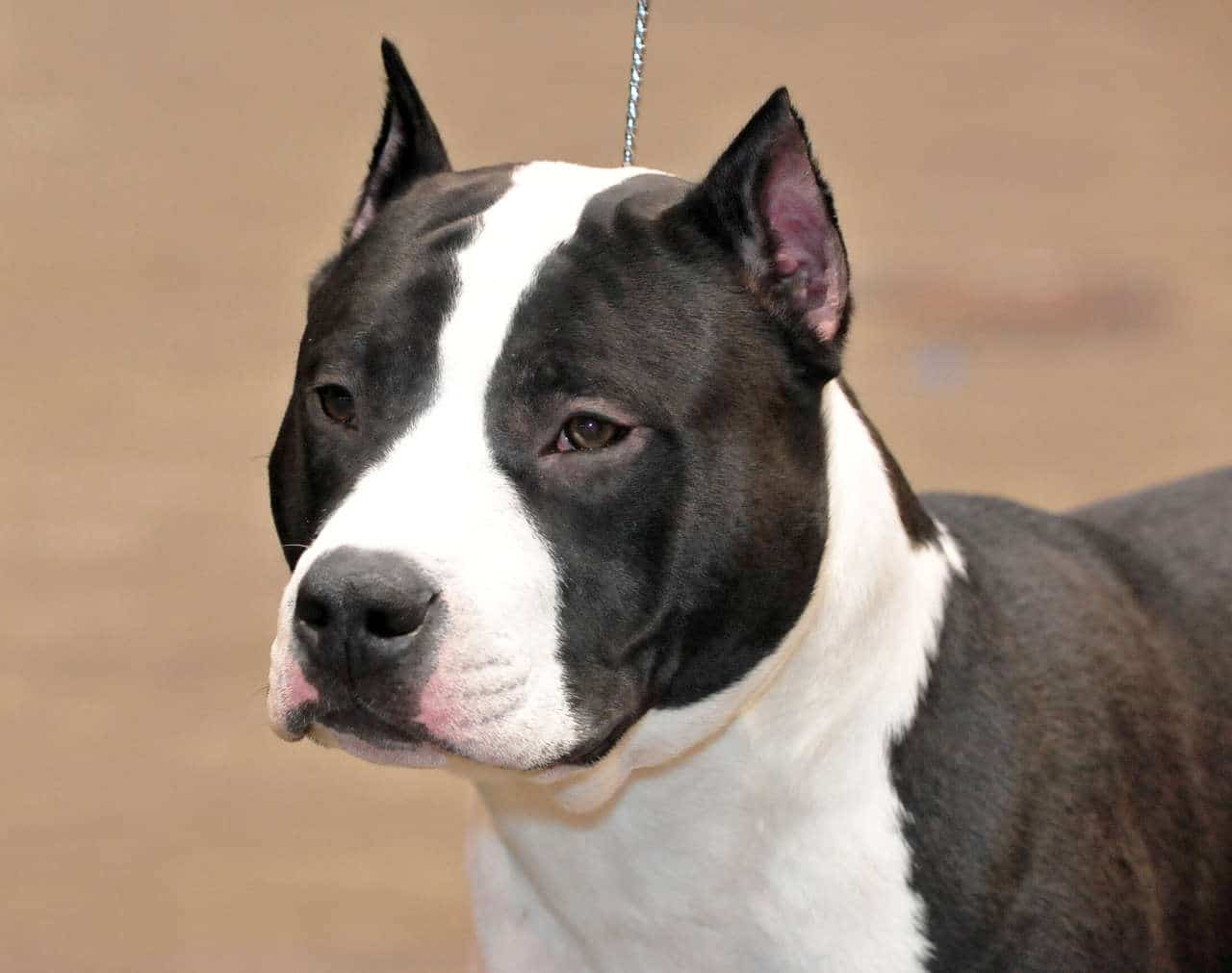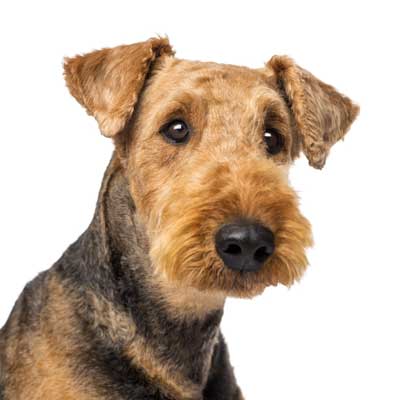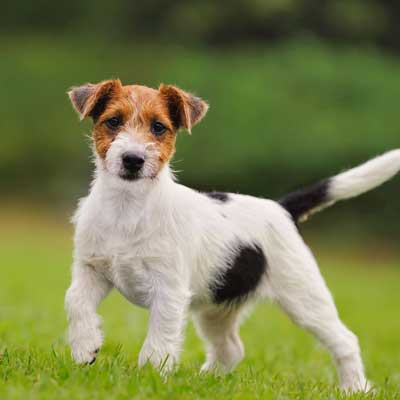Kerry Blue Terrier
Unbelievable hunter, loyal to his family
Like the other Irish Terrier breeds it is assumed that the Kerry Blue has been in the country for centuries, but, once again, because of its humble origins as a rat catcher and all-round farm dog, there are few, if any references to the breed before the 20th century.The first probable literary references to the Kerry Blue dates from 1847 the author describes a bluish slate coloured dog, marked with darker blotches and patches, and often with the tan about the legs and muzzle.This blackish-blue Irish terrier was supposed to be prevalent in Kerry but it has been developed in other counties as well. The blue didn’t make its first appearance on the show benches until 1913, and the Dublin Blue Terrier Club was formed in 1920.The Kerry Blue became quickly so popular as a sort of mascot for Irish patriots that there were actually four clubs promoting its interests for a short time, and between 1922 and 1924 these clubs sponsored no fewer than six shows and six field trials.By 1928 this impressive balanced terrier with its beautiful soft blue coat became popular worldwide and its reputation as an excellent working and companion dog agreed with the breed assessment as "well nigh perfect".
-
Head
Showing plenty of hair. Dogs should be stronger in head
and more muscular than bitches. -
Head - skull region
Skull: Strong and well balanced.
Stop: Slight. -
Head - facial region
Nose: Black, nostrils large and wide.
Muzzle: The foreface should be of medium length.
Teeth: Teeth large even and white, scissor bite (level bite acceptable).
Jaws: Jaws strong and muscular (punishing jaws).
Mouth: Gums and roof dark.
Eyes: Dark or dark hazel, medium in size and well placed, keen in
expression.
Ears: Thin and not large, carried in front or close to the sides of the head, in a forward position, again to express the keen, sharp terrier expression. -
Neck
Well proportioned, well set on shoulders and moderately
long. -
Body
Back: Medium length, level.
Loin: Moderate in length.
Chest: Deep and of moderate width. Ribs well sprung. -
Tail
Thin, well placed and carried erect and gaily. -
Forequarters
Shoulders: Fine, sloping, well-knit.
Forelegs: Straight in front, bone good.
Forefeet: Compact, pads strong and rounded, toe nails black. -
Hindquarters
Hindlegs well set under dog.
Thigh: Muscular, well developed.
Hocks: Strong. -
Feet
compact, pads strong and rounded, toe nails black. -
Gait / Movement
Good coordination, with legs parallel, forelegs reaching out and powerful drive in the hindquarters.
When the dog is moving the topline should remain level and the
head and tail should be carried high. -
Coat - hair
Soft, plentiful, and wavy -
Coat - colour
Blue of any shade with or without black points. Black is permissible only up to the age of 18 months, as is also a shade of tan. -
Size and weight
Height at the withers:
Dogs: 18 - 19,5 inches (45,5 to 49,5 cm).
Bitches: 17,5 -19 inches (44,5 to 48 cm).
Weight:
Dogs: 33 lbs to 40 lbs (15 to 18 kg).
Bitches: proportionately less. -
Faults
Any departure from the foregoing points should be considered a fault and the seriousness with which the fault should be regarded should be in exact proportion to its degree and its effect upon the health and welfare of the dog.
• Flesh coloured gums.
• Yellow or light coloured eyes.
• Roach back or hollow back.
• Narrow chest.
• Protruding elbows.
• Teeth undershot or overshot.
• White or bone coloured toe nails.
• Dewclaws on hind legs, or marks of their removal.
• Close, cow-hocked or stilted hind action.
• Dogs whose heads or tails are held up by exhibitors or handlers
should be penalised.
• Hard, wire or bristle coat.
• Any colour other than blue with the exception stated above

